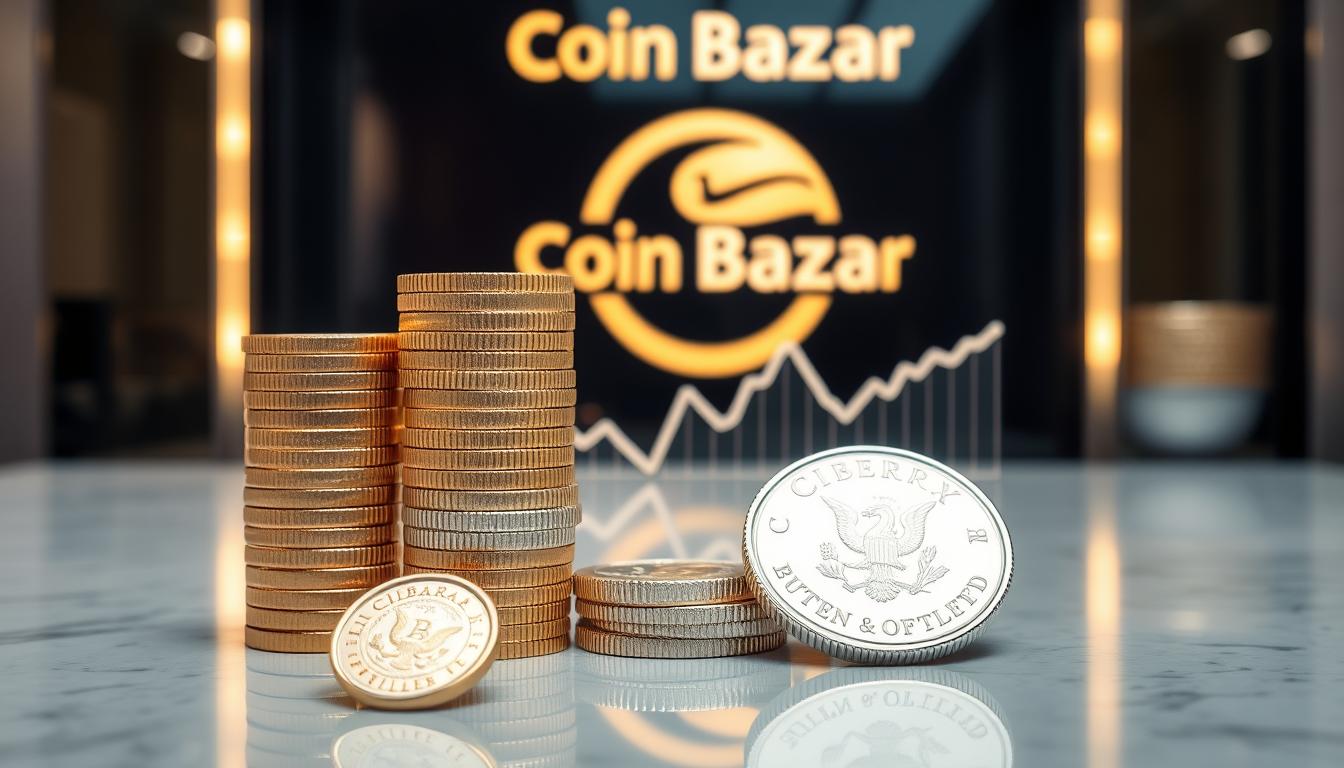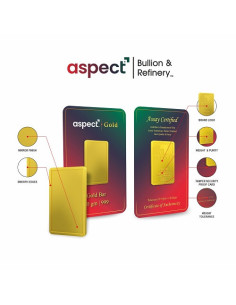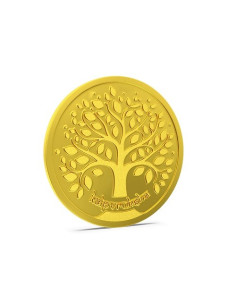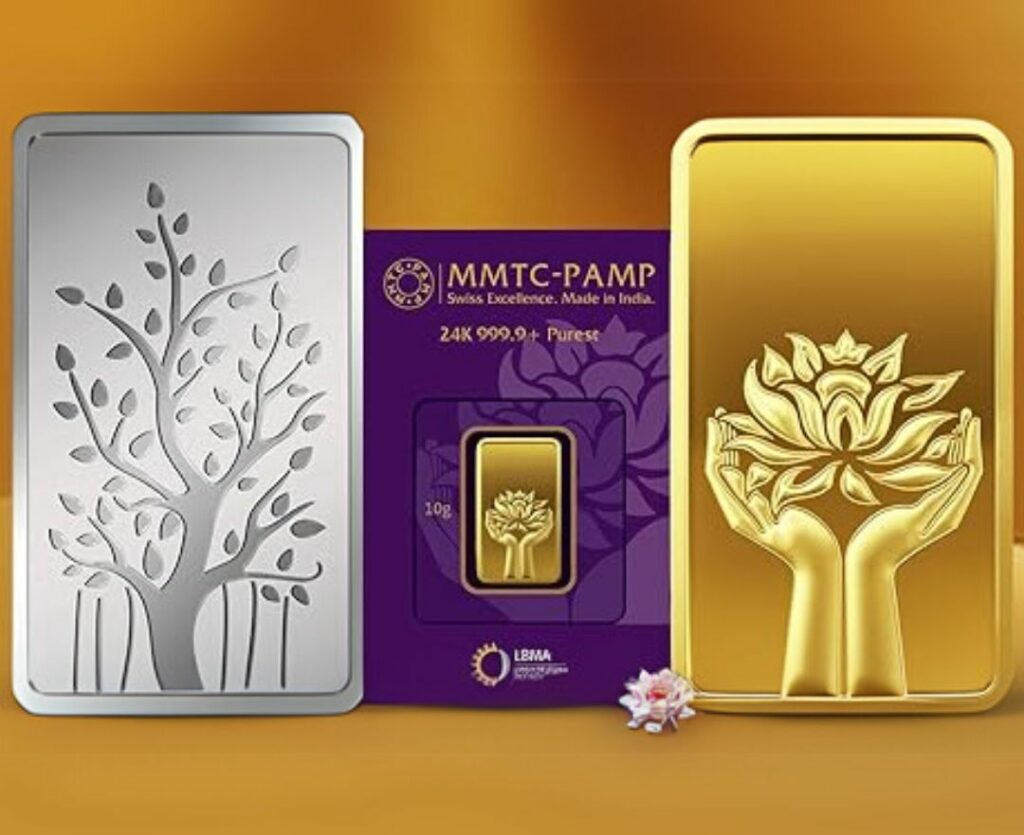Exclusive Deals & Trending Items
As 2025 gets closer, the argument over gold vs silver gets louder. Experts think gold might hit $2,450 to $2,950 per ounce. Silver could go up to $35-$40. This investing in gold and silver guide aims to clear up which one is better for you.
Investors are looking at how these metals compare. They want to know which one will give them the best returns. This guide will help you understand the choices you have.
Experts say you should put 5-8% of your money in gold and 10-15% in silver. In India, people love physical gold, but silver is growing because of its use in industry. Gold hit a record high of Rs 79,700 in 2024, and silver rose by 20%. Knowing this can help you make a smart choice.


Key Takeaways
- Gold prices may hit $2,450–$2,950/ounce in 2025, with 15–18% growth.
- Silver’s demand surges 7% in 2025 due to green tech adoption and industrial use.
- Recommended allocations: 5-8% gold, 10-15% silver in investment portfolios.
- India’s preference for physical gold over sovereign bonds impacts market trends.
- Liquidity, purity (99.99% LBMA-certified), and geopolitical risks shape future performance.
Understanding Precious Metals as Investment Assets


When investing in gold and silver, their unique traits make them key tools for safeguarding wealth. These metals have outperformed inflation over centuries. Gold has seen a 4.81% annual return, while silver has seen a 3.71% return. This is higher than the 2.96% average inflation since 1925.
The Enduring Value of Precious Metals
| Metal | 1925 Price | 2023 Price | Annual Return |
|---|---|---|---|
| Gold | $20.63 | $2,062.60 | 4.81% |
| Silver | $0.68 | $24.30 | 3.71% |
Gold’s stability contrasts with silver’s industrial-driven volatility. This creates distinct roles in precious metals comparison strategies.
Why Investors Turn to Gold and Silver
- Gold thrives during inflation: 90% of its 2021 demand was investment-driven.
- Silver’s industrial use (50% of demand) ties its value to tech and manufacturing trends.
- Both metals act as hedges against market uncertainty and currency devaluation.
The Role of Precious Metals in a Diversified Portfolio
| Asset | Allocation Range | Risk Profile |
|---|---|---|
| Gold | 8% | Stable |
| Silver | 10-15% | Higher Volatility |
For investing in gold and silver, pairing them with stocks or bonds balances risk. Gold’s low correlation to equities offers insulation during downturns. Silver’s industrial ties add growth potential.
Gold vs Silver: A Fundamental Comparison
When deciding between gold vs silver, it’s key to know their main differences. Gold is much pricier, costing over 100 times more than silver per ounce. This differences between gold and silver go beyond just price. Gold is stable in hard times, but silver is in demand for tech, solar panels, and medical tools.


- Price & Use: Gold is rarer, with a 120:1 ratio to silver. Silver, on the other hand, is used in 56% of its supply for industry, unlike gold’s 12%.
- Volatility: Silver’s price moves twice as much as gold’s daily. This makes silver riskier but could be more rewarding during tech booms or green energy growth.
- Storage: Gold is more space-efficient. Half an ounce of gold is worth as much as 1kg of silver. This means silver’s bulk can increase storage costs for big investments.
- Liquidity: Gold is easier to sell because of its high global demand. Silver’s smaller market can lead to price swings during sudden demand spikes.
In India, investors choose between gold vs silver based on their goals. Gold is good for long-term wealth, like Sovereign Gold Bonds or Paytm’s Digital Gold. Silver, with its ties to tech, offers a chance to bet on tech trends. Both metals add diversity to your portfolio, but they serve different roles. Silver’s 80-85% returns in 2010 compared to gold’s 25% show its growth potential, but it also comes with higher risks. Knowing these differences between gold and silver helps you choose the best for your strategy.
Historical Performance Analysis: Gold and Silver Through the Ages
Looking at gold vs silver price trends shows us important patterns for investing in gold and silver. Over 98 years, gold’s price went from $20.63 to $2,062.60, growing at 4.81% each year. Silver’s price rose from $0.68 to $24.30, with an annual growth of 3.71%.
| Metal | 1925 Price | 2023 Price | Annual Return |
|---|---|---|---|
| Gold | $20.63 | $2,062.60 | 4.81% |
| Silver | $0.68 | $24.30 | 3.71% |
Gold’s Historical Price Trajectory
Gold’s price jumped after the US left the gold standard in 1971. It went from $35 to $850 by 1980. In 2008, it rose 25% in a year, showing its value during crises. By 2020, it reached $2,062 during the pandemic.
Sliver’s Market Performance Over Time
Silver’s journey has seen big ups and downs. It hit $49.51/oz in 1980 but fell to $4.99 by 2001. In recent years, it went from $29 in 2020 to $14 in 2021 before rising again. Its price changes a lot due to industrial demand.
Performance During Economic Crises
In the 2008 crash, silver fell 54% while gold dropped 29%. This shows gold’s safety. In 2020’s pandemic, gold gained 25%, while silver rose 47% but then fell. Their different reactions to crises help investors plan.
Investment Characteristics of Gold
When considering investing in gold and silver, gold stands out. It’s a global asset with steady value growth over decades. This makes it key for long-term plans. Unlike silver, gold’s value doesn’t swing with industrial cycles.
Gold as a Store of Value
Central banks worldwide have been net buyers of gold following financial crises.
- Gold’s value has risen 10.6% annually since 1990, outperforming silver’s 7.6% growth.
- Its price stability shines during inflation—gold retains purchasing power even when currencies weaken.
- Over 90% of gold demand comes from investors and central banks, not industry.
Liquidity and Marketability
Gold is widely accepted globally, making it easy to sell. A gram costs Rs 7508. Its market adjusts quickly. Silver, priced at Rs 95 per gram, has higher storage costs and price gaps.
Gold’s Correlation with Other Asset Classes
Gold doesn’t often move with stocks or bonds. While Indian equities crashed by -55.1% in downturns, gold’s worst drop was -25.1%. This makes it a great diversifier for your portfolio.
- Gold’s 14.7% price variability contrasts sharply with silver’s 26.6% swings.
- You can use gold as collateral for loans, a rare option for silver.
In India, gold’s cultural appeal boosts its demand. Whether for weddings or crises, its reliability makes it a top choice over silver.
Investment Characteristics of Silver
When we look at precious metals comparison, silver shines. It’s used both in industry and as a store of value. Unlike gold, differences between gold and silver are clear: 60% of silver goes into making electronics, solar panels, and medical devices. This mix of uses makes its price move with both economic trends and investment patterns.
In India, silver is seen as a more affordable option for investors. It costs less than gold, making it easier for those with smaller budgets to get into the market. But, silver’s price can change a lot more than gold’s, sometimes by 2-3 times a day. This is because:
- Industrial demand drives 58% of global consumption
- Gold-to-silver ratio of 120:1 shows silver is cheaper
- Its price swings can offer trading chances but need careful watching
Gold is known for its stability, great for long-term investments. But silver has a chance to grow with tech advancements. For example, solar energy could increase demand by 20% in the next 10 years. This means:
- It’s easier to start investing with less money
- It can offer good returns when tech and industry are growing
- But, it might drop sharply if tech slows down
Remember, silver is a growth investment, while gold is a safe haven. Mixing both in your portfolio can use their different strengths well.
Price Volatility: Comparing Stability and Growth Potential
When looking at gold vs silver price trends, knowing about volatility is crucial. Gold’s prices remain steady over long periods, unlike silver’s sharp swings. Let’s explore these differences between gold and silver to help you decide.
Gold’s stability comes from its role as a global reserve asset. Over 50 years, its price went from $38 to $2,000/oz, with little daily change. Its low volatility makes it great for keeping wealth safe over time. Central banks hold gold, providing a safety net against economic shocks.
Gold’s Steady Path
- Acts as a safe-haven asset during crises
- Price movements align with inflation, not industrial demand
- Large global reserves buffer against sudden drops
Silver’s Ups and Downs
Silver’s price is influenced by both industrial and investment factors. In 2020, while gold quickly recovered from a dip, silver remained volatile. Its price swings can reach 10% in a week, due to its small market size and 60% industrial use in tech and energy. For instance, during the 2021 “silversqueeze,” prices surged 20% but then fell back fast.
Shared Drivers, Differing Reactions
Both metals respond to inflation and USD trends, but in different ways. When the dollar weakens, gold’s price goes up steadily. Silver, on the other hand, jumps higher but risks sharp drops if tech demand slows. The gold-silver ratio now at 120:1 shows silver is undervalued, but its risks need careful timing.
In India, Paytm Digital Gold makes buying gold easy. Silver’s affordability makes it a good bet on industrial growth. Your choice depends on whether you prefer stability or the chance for growth.
The Gold-Silver Ratio: What It Means for Your Investment Strategy
Investors in India can find great opportunities by looking at the gold-silver ratio. This ratio compares the prices of gold and silver. It helps decide which metal is more valuable. Right now, gold costs ₹60,000/10g and silver is ₹750/10g, making the ratio 80:1. Let’s see how this affects your investment plan.
| Year | Ratio | Context |
|---|---|---|
| 1st Century CE | 12:1 | Roman Empire’s official standard |
| 1834 | 16:1 | U.S. government fixed ratio |
| 2020 | 120:1 | Pandemic-driven peak |
| 2023 | 80:1 | Current market balance |
Historical Gold-Silver Ratio Trends
Since 1980, the ratio has changed a lot. It has gone from 17:1 to 120:1. During the Great Depression, it hit 100:1 as gold went up and silver went down. In 2023, it settled at 80:1, showing a more balanced market.
Using the Ratio as a Timing Indicator
Here’s how to act:
- When ratios exceed 90, consider silver investments
- Below 60? Gold may offer better returns
Current RBI policies make it easier to get gold loans at 75% LTV. This makes physical gold easier to sell. But silver’s price can change a lot (20% swings), so be careful.
What the Current Ratio Suggests for 2025
Analysts think the ratio could drop to 70:1 by 2025. This means silver prices might go up faster than gold’s. With silver ETF inflows up 25%, now’s the time to watch gold vs silver price trends. A 70:1 ratio would be close to historical averages, showing good times to buy silver.
Keep an eye on the ratio every week and consider RBI loan policies. For example, using gold as collateral for loans (up to ₹2 crore via Bajaj Finserv) can free up money to invest in silver when ratios are high.
Industrial Demand: Silver’s Unique Advantage
When we look at differences between gold and silver, silver’s role in modern industries is clear. Unlike gold, silver is used in over 55% of its demand. This includes electronics, solar panels, and medical devices.
Solar panels alone use 20% of the world’s silver supply in 2024. This precious metals comparison highlights silver’s unique value. Its conductivity and antimicrobial properties make it essential in tech.
- Solar energy: 232 million troy ounces used annually in PV cells
- EVs and 5G: Growing demand for conductive materials
- Medical tech: Silver’s antimicrobial uses in wound care and implants
India’s focus on renewable energy could increase silver demand. However, there’s a 750M-ounce shortfall in silver supply over four years. Projects like Vizsla Silver’s Panuco mine show the future supply risks.
With silver’s price up 175% this year, it stands out. It’s not just a store of value but also a key material in tech. Investors should keep an eye on tech trends, as silver’s role goes beyond just value.
Physical Ownership: Bullion, Coins, and Bars
Exploring investing in gold and silver means getting physical assets like coins and bars. These give you direct access to the bullion market for gold and silver. It’s key to know about storage, purity, and trusted sellers to keep your investments safe and real.
Storage Considerations for Physical Gold and Silver
Where you keep your gold and silver is important. Here are some options to consider:
| Storage Type | Security | Cost | Accessibility |
|---|---|---|---|
| Home Storage | Moderate | Low | High |
| Bank Safe Deposit Box | High | Moderate | Moderate |
| Private Vaults | Very High | High | Low |
Authentication and Purity Standards
Make sure your gold and silver meet global and local standards. Look for:
- Gold: 24k (.999 purity) or higher
- Silver: .999 fine purity
- BIS hallmark certification in India
Reputable mints like those certified by the LBMA ensure quality. Stay away from items without clear certification.
Buying from Reputable Dealers in India
In India, pick sellers that follow BIS standards. Here are some tips:
- Check if the dealer has licenses and BIS certification
- Buy government-minted coins like Sovereigns and Krugerrands
- Look for GOFO-linked pricing during transactions
Seasonal demand, like during festivals, can impact availability. Always ask for lab reports for bars over 100g.
Gold and Silver Jewelry as Investment in the Indian Context
Gold and silver jewelry are special in Indian culture. They mix tradition with keeping wealth safe. When picking between silver vs gold jewelry for investing in gold and silver, think about resale value and demand. Silver is in demand for solar panels and EVs, while gold is a classic value keeper.
- Purity and Costs: 24K gold keeps its metal value, but 22K is more common in jewelry. Making charges increase costs, lowering resale value.
- Market Trends: Young investors like digital gold, but watch out for fees. Silver’s use in tech drives price changes.
- Expert Insight:
“Silver is the best investment, better than real estate, oil, and gas.” – Robert Kiyosaki
| Aspect | Gold Jewelry | Silver Jewelry |
|---|---|---|
| Resale Value | Higher due to stable demand | Lower but tied to tech industry trends |
| Industrial Use | Negligible | 50% of global demand for solar and electronics |
| Price Volatility | Lower (20% 5-year growth) | Higher (50% 5-year surge) |
For the best returns, choose hallmark-certified pieces. Keep jewelry safe to avoid damage. Remember India’s climate when caring for your collection. Experts say put 5-10% of your portfolio in physical metals. Always compare prices and purity before buying!
Paper Investments: ETFs, Mining Stocks, and Futures
You don’t need to own gold and silver physically to invest. ETFs, mining stocks, and futures are great alternatives. They let you follow the price without keeping the metal. These options are perfect for those looking to invest in gold vs silver in India.
Gold ETFs vs Silver ETFs
Gold ETFs, like SPDR Gold Shares (GLD) and iShares Gold Trust (IAU), hold real gold. Silver ETFs track silver prices. The main difference is in fees: iShares Gold Trust (IAU) has a 0.25% fee, while SPDR Gold has 0.40%.
- FGDL ETF rose 35.36% in 2024, outperforming others.
- iShares Gold Trust Micro (IAUM) has a 0.09% expense ratio, making it cost-efficient.
- Goldman Sachs’ ETF (AAAU) offers direct exposure without storage costs.
Look at fees and performance to match your investment goals.
Mining Company Investments
Mining stocks can make more money when prices go up but come with risks. ETFs like VanEck Gold Miners (GDX) offer a mix of miners with a 0.51% fee. Think about:
- Major producers (e.g., GDX) for stability.
- Exploration firms for higher risk/reward.
- Leveraged ETFs (e.g., NUGT) double gains/losses, requiring careful monitoring.
These choices offer a way to invest in gold vs silver through company performance.
Futures and Options Strategies
Advanced investors use futures contracts to bet on price swings or hedge risks. Options let you lock in prices, but you need to know the market. Always consider volatility and global events that affect both metals.
Tax Implications for Precious Metal Investments in India
Knowing the tax rules is crucial when investing in gold and silver. Taxes can affect your earnings in the bullion market for gold and silver. So, understanding the rules can help you save more. Recent tax policy changes have changed how gains are taxed, especially for physical metals and ETFs.
Capital gains taxes depend on how long you hold the investment. For gold ETFs, selling after 12 months means a 12.5% long-term gain tax. Short-term gains are taxed based on your income level. Silver ETFs also have a 12-month rule.
Physical gold and silver held for over 24 months are taxed at LTCG rates. For example:
Nitya buys ₹50,000 of silver. She pays ₹1,500 GST (3%) plus making charges taxed at 18% GST.
- Capital Gains: Gold LTCG tax is 20% + 4% cess (24% total) if held ≤3 years. Silver ETFs taxed at 12.5% after 12 months.
- GST: Physical gold attracts 3% GST on purchase. Silver ornaments add 18% GST on making charges.
- Wealth Tax: No wealth tax on gold/silver holdings. But gifts over ₹50,000 from non-relatives are taxable income.
Physical purchases over ₹1 lakh incur 1% TDS at sale. Sovereign Gold Bonds (SGBs) offer tax benefits: 2.5% annual interest taxed as income, with LTCG taxed at 12.5% after 3 years. Always keep receipts to prove purchase dates for tax claims.
Cultural Significance and Demand Drivers in India
In India, cultural traditions deeply shape the demand for gold vs silver jewelry. Gold is a big hit in weddings and festivals. Silver, on the other hand, is gaining popularity in modern markets. Let’s explore how these traditions impact your investment choices.
- Over 10 million weddings annually drive 50-55% of India’s gold jewelry sales.
- Festivals like Diwali and Dhanteras boost gold sales by 40-60 tonnes in just days.
- Rural regions, home to 60% of gold demand, rely on agricultural incomes to fuel purchases.
| Aspect | Gold | Silver |
|---|---|---|
| Cultural Use | Wedding dowries, religious offerings | Industrial uses, modern jewelry trends |
| Price Perception | Safe store of value, 80-85% market share | Cheaper, tied to tech and medical demand |
| Regional Trends | North: Kundan designs; South: plain 22k gold | Urban areas see 15-20% market share growth |
Modern shifts show younger buyers exploring silver vs gold jewelry for affordability. While festivals keep gold central, urban markets favor silver’s versatility. This precious metals comparison reveals how tradition and innovation shape India’s $12.4 billion gold jewelry industry.
Understanding these trends helps navigate cultural drivers impacting prices. Gold’s enduring role in weddings and harvest-linked purchases contrasts with silver’s industrial rise. Your investment strategy can balance tradition with emerging opportunities.
Market Outlook for Gold and Silver in 2025
Investors in India are watching gold vs silver price trends closely. Experts think gold prices might hit $2,950 per ounce by late 2025. This is due to central banks buying more and the U.S. dollar weakening.
Silver’s value could reach $35-$40/oz, thanks to its use in solar technology. About 20% of the world’s silver now goes into renewable energy projects.
There’s a silver shortage of 750 million ounces over four years. Gold mining output is staying steady. Important things to keep an eye on include:
- Central banks buying over 1,000 tonnes of gold in 2024
- Increased demand from India’s festivals and weddings
- Global ETF holdings still 18% below their peak
Geopolitical changes are crucial. The IMF says the dollar’s power is falling, which could help both metals. But, prices might drop 5.1% in 2025 because of iron ore and zinc. Silver’s tech demand could help it stand out, though.
Investors should think about mixing gold vs silver. Gold is stable, while silver’s growth in tech is promising.
Keep an eye on what central banks do. China bought 15 tonnes of gold in late 2024. This shows long-term trends. With gold near records and silver growing 15-18% a year, 2025 is a good time to invest. Retail investors should look at both metals as ways to protect against inflation and currency changes.
Building a Balanced Precious Metals Portfolio
When investing in gold and silver, it’s smart to mix their strengths. Experts say put 8% in gold and 10-15% in silver. This uses gold’s steady value and silver’s potential for growth.
First, figure out how much risk you can take and how long you can invest. If you’re cautious, put 70% of your metals in gold and 30% in silver. For those looking for more growth, try 40% gold and 60% silver.
Use a mix of physical items like coins and ETFs for flexibility. Precious metals comparison shows gold’s steady returns versus silver’s ups and downs. For instance, Bank of America thinks gold could hit $3,000/ounce by 2025. Silver might go over $35/ounce.
Use dollar-cost averaging to handle price changes. This method helps even out the highs and lows.
- Physical allocation: 50% bars/coins, 30% ETFs
- Risk management: Rebalance quarterly to maintain ratios
- Indian investors: Include family jewelry in your asset mix while tracking GST implications
Silver’s industrial use and gold’s inflation protection work well together. Keep an eye on market changes like central bank actions and industrial trends. Adding both metals to your portfolio makes it stronger against economic ups and downs.
Conclusion: Making Your Gold vs Silver Investment Decision
Your choice between gold and silver depends on your financial goals. Gold is known for its stability over decades, making it great for long-term wealth protection. On the other hand, silver’s higher volatility might offer growth but comes with more risk.
Both metals can protect against inflation, but their performance changes with market conditions. Think about your risk tolerance and how long you plan to hold onto your investment. This will help you decide between gold and silver.
Gold is currently priced around $2,400 to $2,500 per ounce, offering solid liquidity. Silver, with its 50% use in tech and manufacturing, presents unique growth opportunities. The gold-to-silver ratio is over 80, suggesting silver might bounce back against gold.
Investors with a conservative approach might prefer gold. Those looking for growth might choose silver. Mixing both gold and silver in your portfolio can balance risk and reward.
Begin by setting aside 5-10% of your portfolio for precious metals. You can trade gold and silver through platforms like Zerodha or MCX. Keep an eye on economic indicators like inflation and the gold-silver ratio to time your investments.
Whether you opt for gold’s security or silver’s growth potential, investing in both requires constant analysis of market trends and your financial strategy.




















